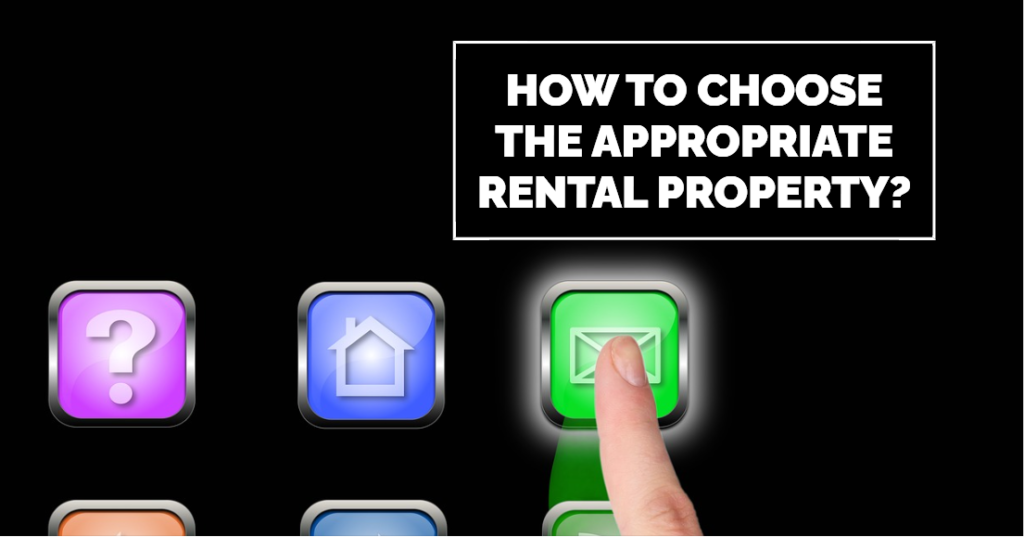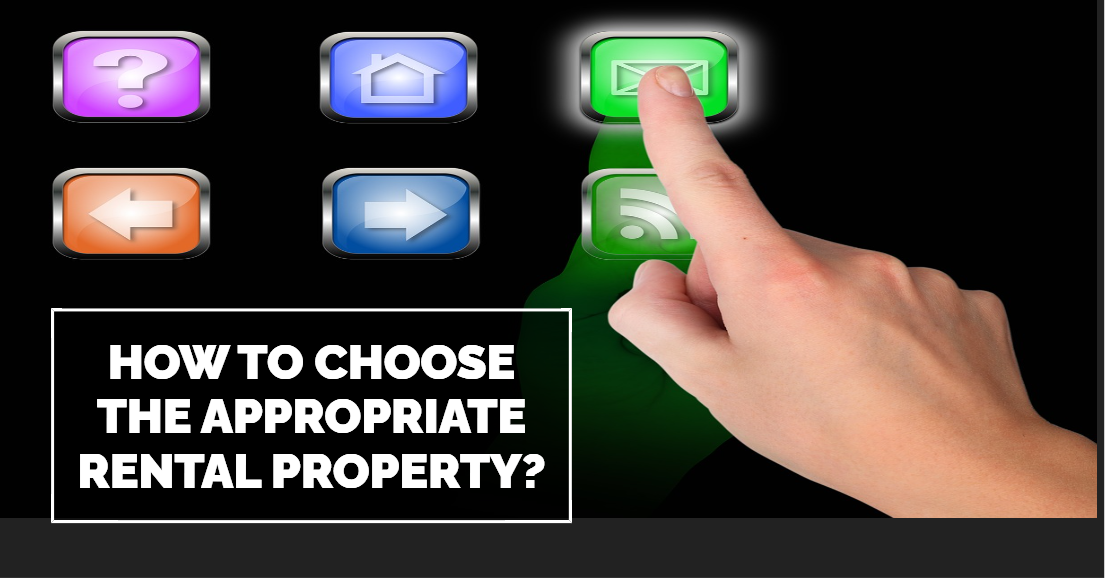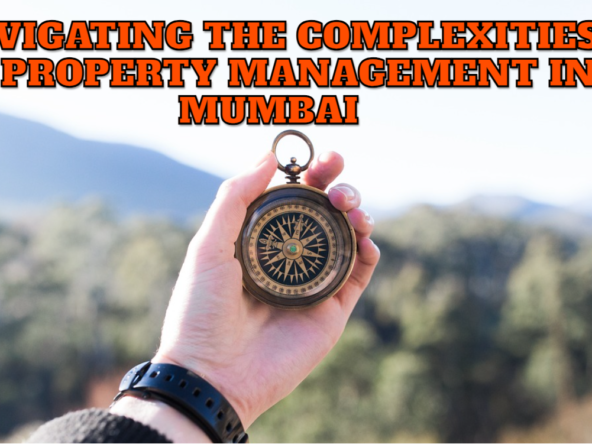A Guide to Choosing the Perfect Rental Property: Tips and Insights
Choosing the right rental property is a crucial decision that can significantly impact your quality of life and financial well-being. Whether you’re a first-time renter or a seasoned tenant, navigating the rental market can be overwhelming. To help you make an informed decision, here are some essential tips and insights to consider when selecting the appropriate rental property:

1. Define Your Needs and Preferences
Before you start your search, take some time to clearly define your needs and preferences. Consider factors such as location, budget, size, amenities, and desired lease term. Understanding your priorities will narrow down your options and make the decision-making process more manageable.
2. Set a Realistic Budget
Establishing a realistic budget is essential when searching for a rental property. Take into account not only the monthly rent but also additional expenses such as utilities, parking fees, and maintenance costs. Avoid stretching your budget too thin, as it could lead to financial strain in the long run.
3. Research the Neighborhood
The neighborhood you choose can significantly impact your living experience. Research the area’s safety, proximity to amenities such as schools, supermarkets, public transportation, and recreational facilities. Visit the neighborhood at different times of the day to get a feel for the atmosphere and vibe.
4. Assess the Property’s Condition
When viewing potential rental properties, pay close attention to the condition of the unit and its surroundings. Check for signs of neglect or disrepair, such as leaky faucets, peeling paint, or mold. Inquire about the property’s maintenance history and the landlord’s responsiveness to repair requests to ensure a well-maintained living environment.
5. Review the Lease Agreement Carefully
Before signing a lease agreement, thoroughly review its terms and conditions. Pay attention to clauses regarding rent increases, security deposits, pet policies, subleasing options, and lease termination procedures. Seek clarification on any ambiguous language and ensure that you understand your rights and obligations as a tenant.
6. Consider Future Plans
Think about your long-term plans and how they align with the rental property you’re considering. If you anticipate changes such as starting a family, changing jobs, or relocating, consider whether the property meets your future needs and flexibility requirements.
7. Seek Recommendations and References
Reach out to friends, family members, and colleagues who have experience renting in the area for recommendations and insights. Additionally, request references from previous tenants or reviews of the property and landlord online to gain further perspective on what to expect.
8. Trust Your Instincts
Lastly, trust your instincts when making a decision. If something doesn’t feel right or if you have reservations about a particular property, it’s okay to walk away and continue your search. Remember that finding the perfect rental property may take time, but the effort invested in finding the right fit will be worth it in the end.
By following these tips and insights, you can navigate the rental market with confidence and choose the appropriate rental property that meets your needs, preferences, and lifestyle. Happy house hunting!
Location is Key: Tips for Finding Your Ideal Rental Space
Choosing the right location for your rental space is crucial as it significantly impacts your lifestyle, convenience, and overall satisfaction. Here are some essential tips to help you find the ideal rental space based on location:
1. Consider Proximity to Work or School
One of the most important factors to consider when choosing a rental space is its proximity to your workplace or school. Assess the commute time and transportation options available, such as public transit, highways, or bike lanes. A shorter commute can save you time and reduce stress, allowing for a better work-life balance.
2. Evaluate Neighborhood Amenities
Research the amenities available in the neighborhood to ensure that it meets your lifestyle needs. Look for nearby grocery stores, restaurants, cafes, parks, gyms, and recreational facilities. Access to essential services and recreational activities can enhance your quality of life and make daily living more convenient and enjoyable.
3. Prioritize Safety and Security
Safety should be a top priority when choosing a rental location. Research crime rates and safety statistics for the neighborhood, and look for features such as well-lit streets, security cameras, and gated communities. Additionally, consider factors such as emergency services availability and neighborhood watch programs to ensure peace of mind.
4. Explore the Surrounding Environment
Take the time to explore the surrounding environment of potential rental spaces. Pay attention to factors such as noise levels, air quality, and green spaces. A quiet and peaceful neighborhood with access to parks or nature trails can provide a serene living environment and improve overall well-being.
5. Research School Districts
If you have children or plan to start a family, research the quality of local school districts in the area. Look for schools with high academic performance, extracurricular activities, and supportive resources for students. Living in a reputable school district can positively impact your child’s education and future opportunities.
6. Consider Future Development
Consider the potential for future development and growth in the area when selecting a rental location. Look for signs of economic growth, infrastructure improvements, and new developments, as these factors can increase property value and enhance the desirability of the neighborhood over time.
7. Assess Affordability and Cost of Living
Evaluate the cost of living in the area and ensure that it aligns with your budget and financial goals. Research rental prices, utility costs, property taxes, and other expenses associated with living in the neighborhood. It’s essential to choose a location that is affordable and allows you to maintain financial stability.
8. Seek Local Insights and Recommendations
Reach out to locals or online communities for insights and recommendations about the neighborhood. Ask about their experiences living in the area, any challenges they’ve encountered, and what they love most about the neighborhood. Hearing firsthand experiences can provide valuable insights and help you make an informed decision.
Conclusion:
Finding the ideal rental space requires careful consideration of its location and surrounding environment. By prioritizing factors such as proximity to work or school, neighborhood amenities, safety, and future development, you can choose a rental space that aligns with your lifestyle, preferences, and budget. Happy house hunting!
The Layout Of The Rental Property: Why is it Essential?
The layout of a rental property plays a significant role in determining its functionality, comfort, and overall appeal. Here’s why it’s essential to consider the layout when choosing a rental property:
1. Efficient Use of Space
A well-designed layout maximizes the use of space, making the rental property feel more spacious and functional. An open floor plan, for example, can create a sense of openness and flow between rooms, while clever storage solutions such as built-in closets or shelving optimize storage space without compromising on aesthetics.
2. Comfort and Livability
The layout of a rental property directly impacts its comfort and livability. Consider factors such as room size, arrangement, and accessibility when evaluating the layout. A well-proportioned living room, bedrooms with ample natural light, and a functional kitchen layout can enhance comfort and make daily living more enjoyable.
3. Privacy and Separation of Spaces
Privacy is another crucial aspect to consider when assessing the layout of a rental property. Look for a layout that provides adequate separation between living areas, bedrooms, and bathrooms to ensure privacy for occupants. Features such as ensuite bathrooms, separate entrances, or partition walls can enhance privacy and create distinct zones within the property.
4. Flow and Circulation
A well-designed layout promotes smooth flow and circulation throughout the rental property. Pay attention to the arrangement of rooms, corridors, and entrances to ensure seamless movement between spaces. A logical layout with clear pathways and minimal obstructions enhances functionality and improves the overall user experience.
5. Flexibility and Adaptability
The layout of a rental property should be flexible and adaptable to accommodate different lifestyles and preferences. Look for a layout that allows for easy customization and personalization, whether it’s rearranging furniture, adding or removing partitions, or creating multifunctional spaces. A versatile layout ensures that the rental property can evolve with your changing needs over time.
6. Safety and Accessibility
Safety and accessibility are paramount considerations when evaluating the layout of a rental property, especially for individuals with mobility challenges or disabilities. Ensure that the layout complies with safety codes and regulations, with features such as well-lit pathways, non-slip flooring, and accessible entrances. Additionally, consider factors such as staircases, door widths, and bathroom accessibility to ensure that the property is safe and accessible for all occupants.
Conclusion:
The layout of a rental property plays a crucial role in determining its functionality, comfort, and overall suitability for occupants. By considering factors such as efficient use of space, comfort and livability, privacy, flow and circulation, flexibility, and safety and accessibility, you can choose a rental property with a layout that meets your needs and enhances your quality of life.
Essential Services and Amenities to Look for When Renting an Apartment
When renting an apartment, it’s essential to consider the services and amenities available to ensure a comfortable and convenient living experience. Here are some essential services and amenities to look for when renting an apartment:
1. Security Features:
- 24/7 Security: Look for apartments with round-the-clock security services, including security guards, CCTV surveillance, and secure entry systems, to ensure the safety of residents and their belongings.
- Secure Parking: On-site parking facilities with designated parking spaces or a secure parking garage provide added convenience and peace of mind for residents with vehicles.
2. Maintenance and Management:
- Responsive Maintenance: Choose apartments with a responsive maintenance team or property management company that can quickly address repair and maintenance issues to maintain the property’s condition and ensure a comfortable living environment.
- Online Portal: A user-friendly online portal or app for submitting maintenance requests, paying rent, and accessing important information and updates simplifies communication and enhances convenience for residents.
3. Utilities and Connectivity:
- High-Speed Internet: Access to high-speed internet connectivity is essential for work, entertainment, and staying connected with family and friends.
- Utilities Included: Consider apartments that include utilities such as water, electricity, and gas in the rent to avoid the hassle of separate bills and budgeting.
4. Common Areas and Recreation:
- Fitness Center: On-site fitness facilities, including a gym or fitness center equipped with cardio machines, weights, and other exercise equipment, promote an active and healthy lifestyle for residents.
- Swimming Pool: A swimming pool and sundeck provide a refreshing retreat during hot summer months and offer residents a space to relax and unwind.
- Community Spaces: Common areas such as a clubhouse, lounge, or outdoor seating areas provide opportunities for socializing, hosting gatherings, or simply enjoying leisure time with neighbors.
5. Convenience and Accessibility:
- Laundry Facilities: On-site laundry facilities or in-unit washer and dryer connections save residents time and effort by eliminating the need to visit off-site laundromats.
- Pet-Friendly Amenities: If you have pets, look for apartments with pet-friendly amenities such as designated pet areas, pet grooming stations, or nearby parks and trails for walking and exercise.
- Nearby Amenities: Consider the proximity of the apartment to essential amenities such as grocery stores, pharmacies, restaurants, schools, and public transportation options for added convenience and accessibility.
6. Additional Services:
- Package Delivery: Apartments with secure package delivery lockers or concierge services for package handling and storage simplify the process of receiving and retrieving packages, especially for residents who shop online frequently.
- On-Site Management: An on-site management office or resident services desk provides residents with a point of contact for assistance, inquiries, and community events, fostering a sense of community and support.
Conclusion:
When renting an apartment, prioritize essential services and amenities that align with your lifestyle, preferences, and needs. By choosing an apartment with security features, responsive maintenance, utilities and connectivity, common areas and recreation, convenience and accessibility, and additional services, you can enjoy a comfortable and enriching living experience in your new home.
Wrapping Up
As we conclude, it’s clear that choosing the right rental property involves considering a multitude of factors, from location and layout to services and amenities. By taking the time to assess your needs, prioritize your preferences, and conduct thorough research, you can find the perfect rental space that meets your lifestyle and budget.
Whether you’re searching for a cozy studio apartment in the heart of the city or a spacious family home in a tranquil suburb, the key is to remain patient, proactive, and open-minded throughout the process. Remember to trust your instincts, seek recommendations from trusted sources, and ask questions to ensure that the rental property aligns with your expectations and requirements.
Once you’ve found the ideal rental property, take the time to review the lease agreement carefully, communicate openly with the landlord or property manager, and familiarize yourself with the rules and regulations of the building or community. By establishing a positive relationship with your landlord and neighbors and respecting the property and its surroundings, you can create a harmonious living environment and make the most of your rental experience.
Whether you’re embarking on your first rental journey or transitioning to a new rental property, I hope these tips and insights have provided valuable guidance and inspiration. Remember that finding the perfect rental space may take time and effort, but with careful planning and consideration, you can discover a place to call home that meets your needs and exceeds your expectations. Happy house hunting!





